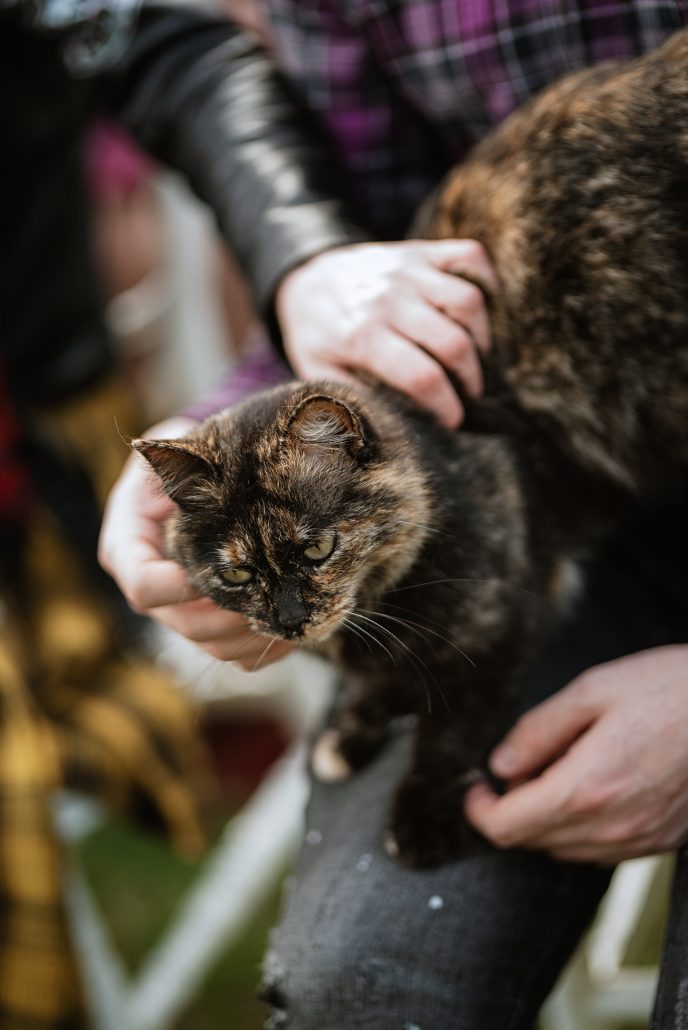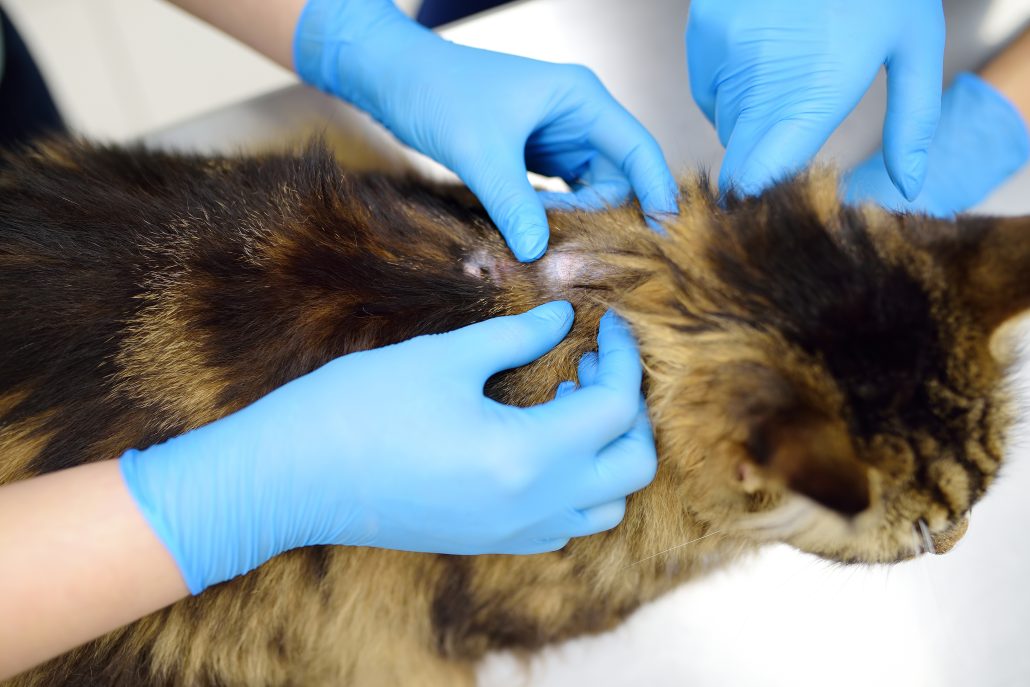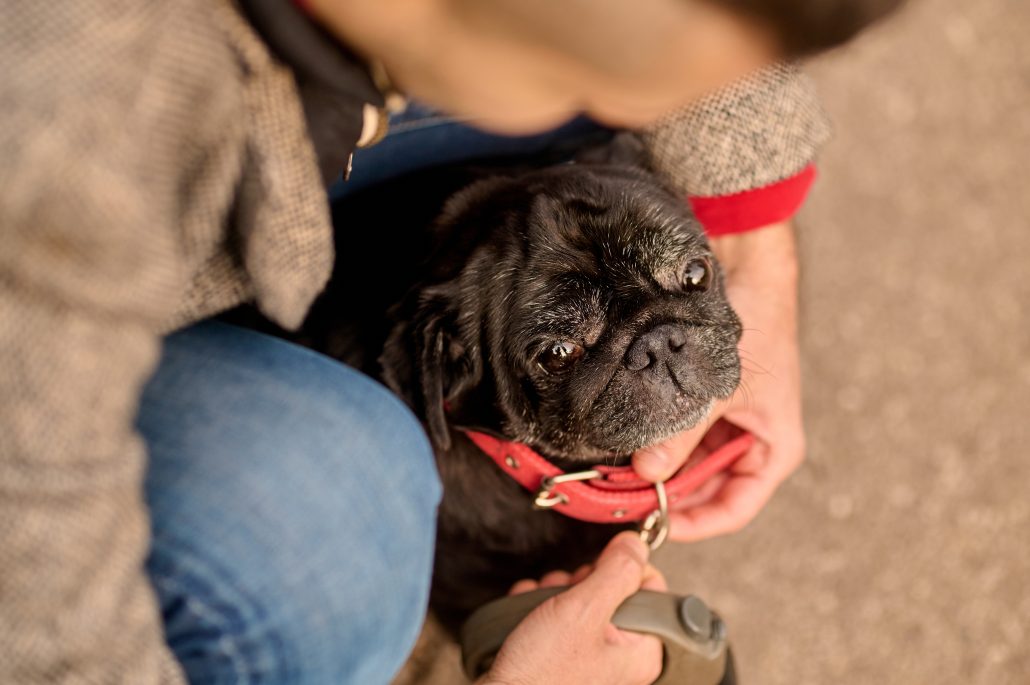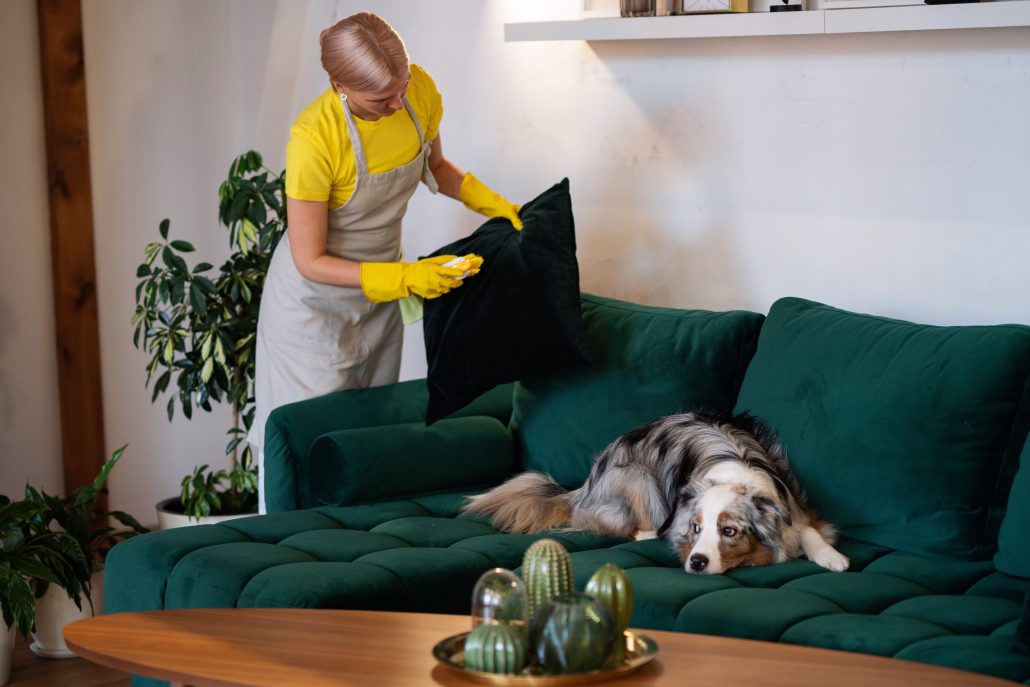
Ringworm in pets can be a bit misleading—it’s not a worm, but a fungal infection that can cause quite a bit of discomfort for our furry friends.
If you’ve noticed your pet scratching more than usual or have seen patches of hair loss, you might be wondering if they’ve picked up this pesky problem. Understanding ringworm is essential for keeping your pet healthy and happy, and addressing it early can make all the difference.
In this post, we’ll walk you through everything you need to know about ringworm in pets. From recognising the symptoms to exploring effective treatments, we’re here to provide you with the knowledge and tools to tackle ringworm head-on. So, let’s dive in and get your pet back to their playful, healthy self!
So, It’s Not A Worm – What Is It?
Ringworm is a common fungal infection that affects the skin, hair and nails. Medically, ringworm is known as dermatophytosis, and it’s caused by fungi like Microsporum and Trichophyton. These fungi feed on dead skin cells and hair.
While it is not an actual worm, the name comes from the appearance of the infection – typically a round, red, raised ring that can look quite alarming. However, not all ringworm infections will show this distinct ring shape.
While ringworm is most commonly seen in cats, the infection is easily spread amongst cats, dogs and even humans. It is spread when your pet comes into direct contact with an infected animal or person. Contaminated objects like couches, combs, food bowls, bedding, and carpets are also common sources of the infection.

Signs & Symptoms Of Ringworm
Fortunately, a ringworm infection isn’t life threatening, but it is highly contagious and quite uncomfortable for our companions. Identifying this infection early can help prevent it from spreading and causing more issues. Here are the key signs to watch for:
- Circular Areas of Hair Loss: Patches of missing hair are often the first noticeable symptom. These patches often start small but can expand over time. The edges of these areas may be slightly raised or red, making them stand out against the surrounding fur.
- Dry, Brittle Hair: The hair in the affected areas tends to become dry and brittle. It may break off easily, leaving patches of bare skin. This happens because the fungus disrupts the normal health of the hair.
- Scabby, Inflamed Skin: As the infection progresses, the skin around the affected areas may become red, swollen, and scabby. These scabs are often a result of the skin’s inflammatory response to the fungus, and they can cause your pet to feel itchy and uncomfortable.
- Rough, Brittle Claws: Ringworm can also affect the claws, making them rough and brittle.
- Changes in Coat Appearance: The overall appearance of the coat might change. You may see uneven patches of thinning fur, changes in fur texture, or a general decline in the coat’s health and lustre.
How Vets Diagnose Ringworm
When it comes to diagnosing ringworm, a vet has several reliable tools at their disposal to pinpoint the issue and get your pet on the path to recovery. In addition to a physical examination, one common method is the Wood’s lamp examination. This procedure involves using a special “black light” called a Wood’s lamp to examine your pet’s fur and skin. The light helps to detect certain types of bacteria and fungi that cause ringworm, making it easier for your vet to spot the infection, especially in the early stages.
Another effective diagnostic tool is the fungal culture. During this process, your vet will collect a few hairs, skin scales, or scabs from your pet. These samples are then placed in a controlled environment where any fungi present can grow. After the culture has had time to develop, your vet will examine the samples under a microscope to check for the presence of ringworm-causing fungi such as Microsporum or Trichophyton. This method provides a definitive diagnosis by confirming the type of fungus responsible for the infection.
Read More: Shedding Light on Dry Skin & Understanding Dog Dandruff

Treating Ringworm
The good news is that ringworm infections are treatable and curable.
- Quarantine: To prevent the spread of the infection, it’s important to keep your infected pet away from other animals and people until they have fully recovered. This helps to avoid passing the fungus to other pets or family members and allows for more focused treatment.
- Topical treatments: These include antifungal creams, ointments, and shampoos designed to target the infection directly on your pet’s skin. Applying these treatments as directed by your vet helps to kill the fungus on the skin’s surface and promotes healing of the affected areas.
- Oral medications: These may be prescribed by your vet, especially for more severe cases. Oral antifungal drugs work to eliminate the fungus and ensure that it is eradicated from your pet’s system. It’s important to follow your vet’s instructions carefully regarding dosage and duration to ensure the treatment is effective.
- Decontamination and Cleaning: The fungus can linger in your pet’s environment, so thorough cleaning is necessary. Use disinfectants that are effective against fungi to clean surfaces, bedding, and any items your pet comes into contact with.
Read More: Tips & Tricks To Give Your Pet Medication
Preventing Future Infections
Once your pet has recovered from ringworm, keeping it from coming back is key to maintaining their health and preventing a new outbreak. Here are some effective strategies to help prevent future infections:
- Maintain Good Hygiene: Regular grooming and hygiene practices are crucial. Brush your pet’s coat frequently to remove loose hairs and skin flakes that could harbour fungal spores. Bathing your pet with antifungal shampoos, as recommended by your vet, can also help keep their skin healthy and less susceptible to infection.
- Regular Veterinary Check-ups: Schedule routine veterinary visits to monitor your pet’s overall health and catch any potential issues early. Your vet can provide guidance on maintaining your pet’s skin and coat health and recommend any necessary preventative treatments.
- Avoid Exposure to Infected Animals: Be cautious around animals that show signs of ringworm or other skin infections. If your pet encounters other animals at parks or pet gatherings, ensure they are healthy and free from visible signs of infection.
- Disinfect and Clean Your Home: Regularly clean and disinfect areas where your pet spends time, including bedding, toys, and furniture. Use antifungal cleaners to eliminate any lingering fungal spores. This helps to reduce the risk of re-infection and keeps your home environment safe and healthy.

Give Them A Total Wellness Plan
Ringworm might not be serious, but it can certainly make your pet feel uncomfortable and is easily spread if not taken care of properly. With a bit of knowledge and the right steps, you can help your furry friend bounce back quickly and prevent future issues.
If you’re seeing signs of ringworm or just need some expert advice on how to handle and prevent it, we’re here to help! Our friendly veterinary team is ready to provide the care and support you need to get your pet back to their happy, healthy self.
Give The House Call Vet a call today to book an appointment. We’ll work with you to make sure your pet stays in great shape and enjoys a life free from ringworm. We look forward to seeing you and your pet soon!

